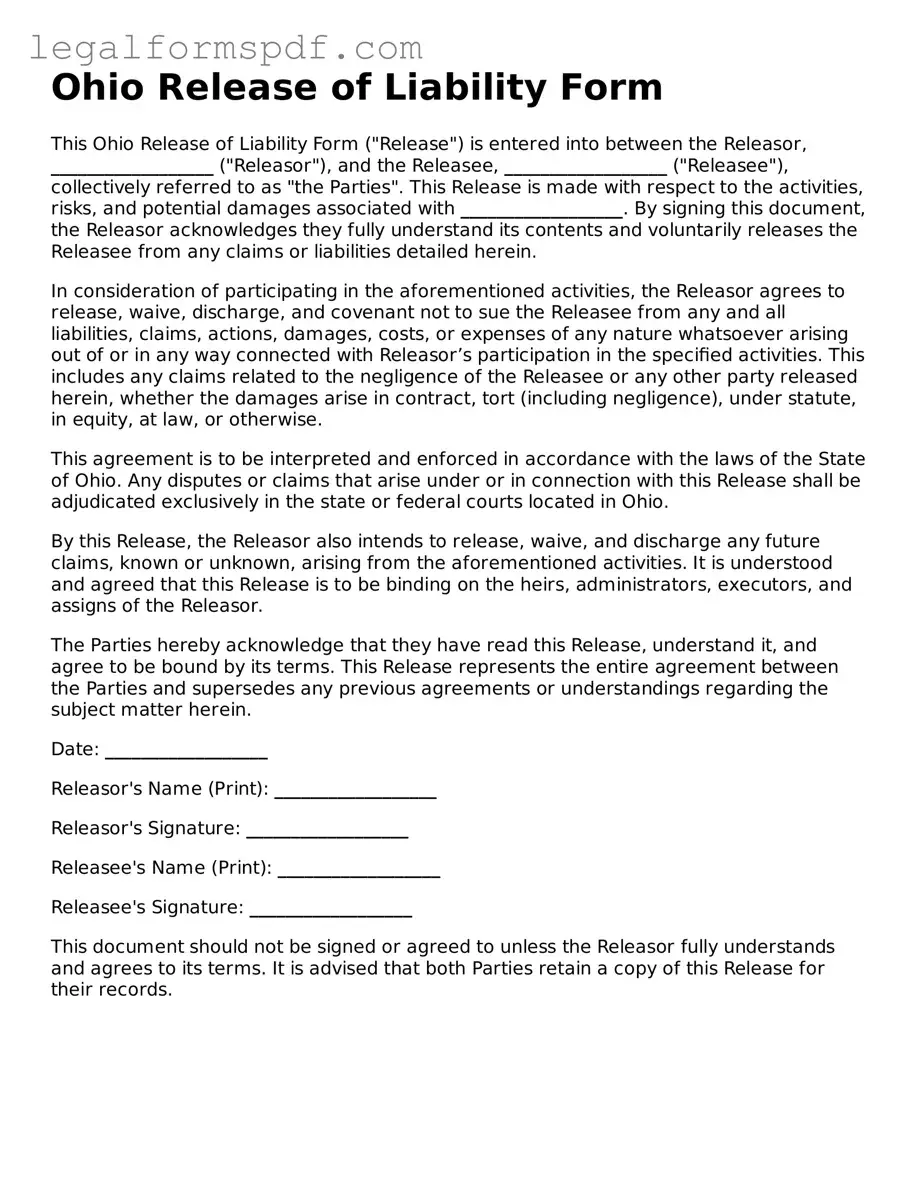What is an Ohio Release of Liability form?
An Ohio Release of Liability form is a legal document used in the state of Ohio that allows an individual (the releasor) to give up all known and unknown claims, lawsuits, damages, and rights against another individual or entity (the releasee) concerning a specific incident, transaction, or event. It’s commonly used in situations where physical activities are involved, like sports events, as well as in the sale of personal property, such as vehicles, to prevent future legal actions.
When should I use an Ohio Release of Liability form?
This form should be used when you want to protect yourself or your organization from potential legal claims in Ohio. Common instances include but are not limited to the sale of personal property, where the buyer agrees not to hold the seller responsible for any issues arising post-sale, or before participating in any event that involves physical activities, to ensure participants cannot sue the organizers for injuries.
Is the Ohio Release of Liability form legally binding?
Yes, it is legally binding if executed properly. This means it must be signed voluntarily by the releasor, without any coercion or fraud, and the releasor must fully understand the implications of releasing the liability. Additionally, for the form to be considered valid, it must be detailed and specific about the rights being released and the circumstances involved.
Do I need a witness or notary for the Ohio Release of Liability form?
While not always legally required, having a witness or notary public sign the form can add a layer of validation and protection, ensuring that the document is more likely to be upheld in a court of law if disputed. This step is highly recommended, especially in transactions or events with significant risks or values involved.
Can I revoke an Ohio Release of Liability after signing it?
Generally, once signed, you cannot revoke an Ohio Release of Liability. It serves as a final agreement between the parties regarding the waiver of legal claims. However, exceptions exist, such as if the agreement was signed under duress, with misrepresentation, or if the releasor was a minor. In such cases, legal advice is crucial to assess the possibility of revocation.
What information is needed in an Ohio Release of Liability form?
Essential information includes the full names and addresses of both the releasor and releasee, a comprehensive description of the event or transaction and associated risks, a clear statement of the releasor giving up legal claims, and the date of the agreement. Both parties should sign and date the form, and including a witness or notary signature is advisable.
How does an Ohio Release of Liability form protect me?
It minimizes legal risks by ensuring that the releasor cannot take legal action against the releasee regarding the event or transaction in question. This protection operates by clearly stating that the releasor understands and accepts the risks involved, agreeing not to hold the releasee liable for any related injuries, damages, or losses.
Where can I find an Ohio Release of Liability form?
Ohio Release of Liability forms can be obtained from various sources, including legal websites, lawyers specializing in Ohio law, or templates available from organizations that commonly use these forms, such as sports clubs or vehicle sales agencies. Ensure that the form you use is specifically designed for Ohio, as laws and requirements can differ from state to state.
